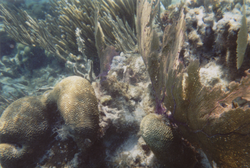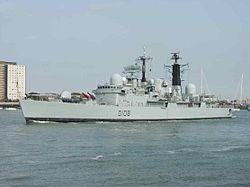Search results
Appearance
There is a page named "Caye Caulker" on Wikipedia
- Caye Caulker (Spanish: Cayo Caulker) is a small limestone coral island off the coast of Belize in the Caribbean Sea measuring about 5 miles (8.0 km) (north...10 KB (1,315 words) - 14:54, 26 January 2025
- Caye Caulker Airport (IATA: CUK, ICAO: MZCK) is an airport that serves the island of Caye Caulker, 20 kilometres (12 mi) off the coast of Belize. After...3 KB (136 words) - 18:19, 9 October 2024
- Ambergris Caye, Caye Caulker, St. George's Caye, Caye Chapel, English Caye, Goff's Caye, and Turneffe Atoll. Ambergris Caye and Caye Caulker are considered...9 KB (724 words) - 00:49, 23 January 2025
- 04250 Caye Chapel is a small, private island in Belize, 16 miles (26 km) north-northeast of Belize City and 3 miles (4.8 km) south of Caye Caulker. It was...3 KB (321 words) - 07:03, 25 April 2024
- January 2018. Retrieved 3 April 2025. Chanona, Carolee (10 March 2022). "Caye Caulker: The Perfect Car-Free Destination If You're Over Driving On Vacation"...30 KB (1,834 words) - 23:37, 4 April 2025
- Hol Chan Marine Reserve is a marine reserve close to Ambergris Caye and Caye Caulker, off the coast of Belize. It covers approximately 18 km² (4,448 acres)...10 KB (1,216 words) - 21:45, 17 August 2024
- Caribbean with RFA Black Rover. They provided relief aid to the island of Caye Caulker, near Belize, in the wake of Hurricane Keith. In addition to clearing...51 KB (4,753 words) - 13:45, 4 April 2025
- interaction. By late on October 2, Keith made landfall in Ambergris Caye and Caye Caulker, Belize as a minimal hurricane. It quickly weakened to a tropical...53 KB (5,626 words) - 06:27, 4 January 2025
- Half Moon Caye is an island and natural monument of Belize located at the southeast corner of Lighthouse Reef Atoll. This natural monument was the first...5 KB (449 words) - 02:10, 20 February 2025
- Swallow Caye Forest reserves Caye Caulker Chiquibul Columbia River Deep River Fresh Water Creek Grants Work Machaca Manatee Mango Creek Monkey Caye Mountain...9 KB (815 words) - 19:33, 1 March 2025
- Caye Marine Reserve Half Moon Caye Natural Monument Hol Chan Marine Reserve Cayes include: Ambergris Caye, Caye Caulker, Caye Chapel, Carrie Bow Caye...9 KB (914 words) - 20:31, 4 February 2025
- Ambergris Caye - John Greif II Airport Belize City Sir Barry Bowen Municipal Airport Philip S. W. Goldson International Airport Caye Caulker - Caye Caulker Airport...4 KB (401 words) - 07:57, 20 March 2025
- Turneffe Atoll is located southeast of Ambergris Caye and Caye Caulker, off the coast of Belize in Central America, 20 miles (32 kilometres) from Belize...6 KB (600 words) - 15:21, 7 June 2024
- Trinidad. Belize Ambergris Caye Caye Caulker Glover's Reef Hick's Cayes Lighthouse Reef St. George's Caye Tobacco Caye Turneffe Atoll Colombia Archipelago...133 KB (9,643 words) - 13:38, 8 April 2025
- Caulker may refer to: Caulking Caulker (surname) Caye Caulker, an island in the Caribbean Sea This disambiguation page lists articles associated with...135 bytes (46 words) - 20:08, 27 January 2020
- Cardiff Cardiff Waterbus Cap-Haïtien, Haiti (at Labadee beach) Cape Town Caye Caulker Charleston Chicago Copenhagen Copenhagen Harbour Buses Davao City Davao...14 KB (993 words) - 10:11, 2 April 2025
- Ambergris Caye Caye Caulker Coco Plum Island Half Moon Caye Laughing Bird Caye Goff's Caye St. George's Caye Tobacco Caye Blackadore Caye Caye Chapel Sapodilla...52 KB (3,881 words) - 05:02, 6 April 2025
- the water could return with a slight shift in the wind direction. In Caye Caulker, there were unofficial wind estimates of 125 mph (201 km/h) and the hurricane...12 KB (1,315 words) - 17:50, 18 November 2024
- (16 km) wide. It is made up of a number of large cayes, such as Blackbird Caye, which surround a central lagoon. Smaller surrounding islands include: The...15 KB (313 words) - 18:31, 19 March 2025
- Laughing Bird Caye is an island off the coast of Placencia, Belize. On 21 December 1991, Laughing Bird Caye National Park was declared. It is spread over...5 KB (556 words) - 13:42, 16 September 2024
- Caye Caulker is a small island off the coast of Belize, 1.6 km (1 mi) west of the Barrier Reef. Caye Caulker is popular with backpackers and budget travellers

















